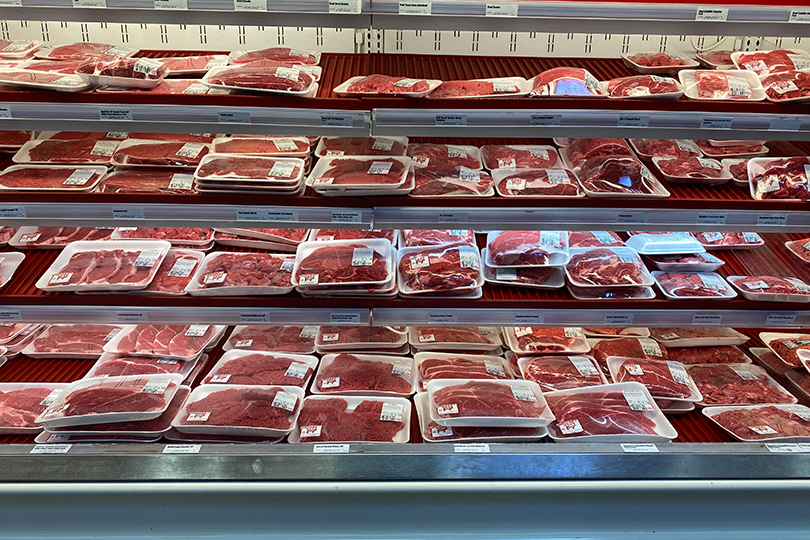The farm-to-retail price spread is the difference between the cost a consumer pays versus what the farmer receives. American Farm Bureau Federation (AFBF) Economist Michael Nepveux said the pandemic drove beef and pork price spreads to record levels.
“If you look at the farm-to-retail price spread for beef, in June it was $5.21 per-pound, and that is the highest it’s been ever since the data was collected beginning back in 1970,” he said. “You see a similar story in pork. So, the farm-to-retail spread for pork hit its record in June at $3.65 per-pound.”
Labor issues in meatpacking plants contributed to the increases, according to Nepveux.
“What we saw back in May and June was a decline in the dollars-per-pound that farmers were receiving for their animals. This was mainly driven by the labor issues that we saw in processing plants,” he said. “This was basically creating a shortage of beef and pork on the market, so you saw the increase in prices at wholesale and retail level. But, because you saw a constraint in processing capacity, which basically created an oversupply of animals on the market, that’s why you saw the decline in the prices of animals, as well.”
Nepveux noted processing capacity appears to be getting back to normal.
“Hopefully, we’re past the worst of it. There still is somewhat of a backlog of animals,” Nepveux said. “Most people think we’re pretty close to, at least on the cattle side of things, getting those feedlots relatively current. Given everything with COVID, it’s hard to speak with any certainty, but I think we’re, at least in terms of processing capacity, mostly relatively back to normal.”
Read more about the price spreads in AFBF’s Market Intel analysis.

